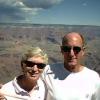Departing a hot and high airport
-
Members Online
- stlcg
- ToddCC22
- Fly Boomer
- Wingfree
- buddy
- jcovington
- Hank
- bluehighwayflyer
- Schllc
- CL605
- N201MKTurbo
- alextstone
- highflyer77
- gabez
- ROPDown
- Slick Nick
- benworthy058
- anthonydesmet
- DXB
- richardbrochu27
- MaxwellSmart86
- Pinecone
- Andy95W
- Gilt
- GeeBee
- Guy123
- Greg Ellis
- hazek
- catchman86
- Flyler
- SKI
- PeytonM
- jsimmons619


Recommended Posts
Join the conversation
You can post now and register later. If you have an account, sign in now to post with your account.